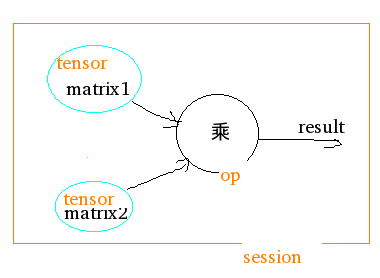基础使用
TensorFlow几个要点
1、使用图graph来代表计算
2、在Sessions环境中执行图
3、使用tensors代表数据
4、使用Variables变量维护状态
5、使用feeds和fetches获取或写入操作
图的使用
构建下图
构建图
|
|
启动图
|
|
Sessions自动释放资源
在Python解释器中使用
在解释器中可以使用InteractiveSession class, Tensor.eval() ,Operation.run(),避免使用变量保存session
Tensors
TensorFlow使用tensor数据结构表示所有数据,在不同操作之间只能传入tensor数据。tensor类似N维数组,一个tensor包括一个数据类型,一个rank(阶,张量的维数)和一个shape(形状,张量的维度)
| 阶 | 形状 | 维数 | 实例 |
|---|---|---|---|
| 0 | [] | 0-D | 纯量 s = 483 |
| 1 | [D0] | 1-D | 向量 v = [1.1, 2.2, 3.3] |
| 2 | [D0,D1] | 2-D | 矩阵 m = [[1, 2, 3], [4, 5, 6], [7, 8, 9]] |
| 3 | [D0,D1,D2] | 3-D | 3阶张量 t = [[[2], [4], [6]], [[8], [10], [12]], [[14], [16], [18]]] |
| n | [D0,…Dn] | 4-D | n阶 |
变量
变量存储图的状态
sess.run(init_op)之前并没有执行任何操作,所以state为0。sess.run(update)执行操作才会更新state值。
Fetches
用于取出操作的结果。尽量在一次操作运行中取出多个tensor,提高效率。
Feeds
用于临时保存tensor值,调用方法结束后,feed消失